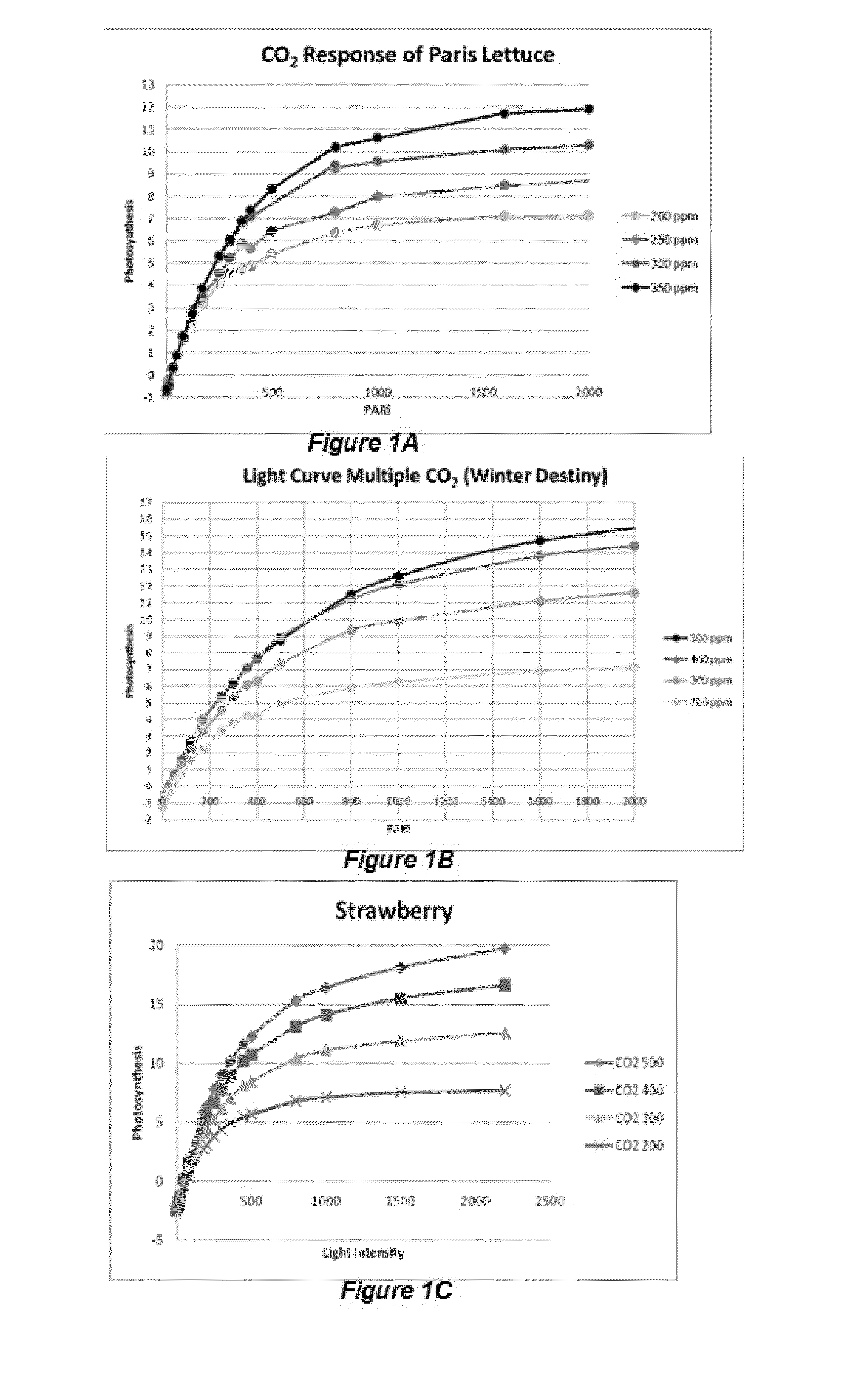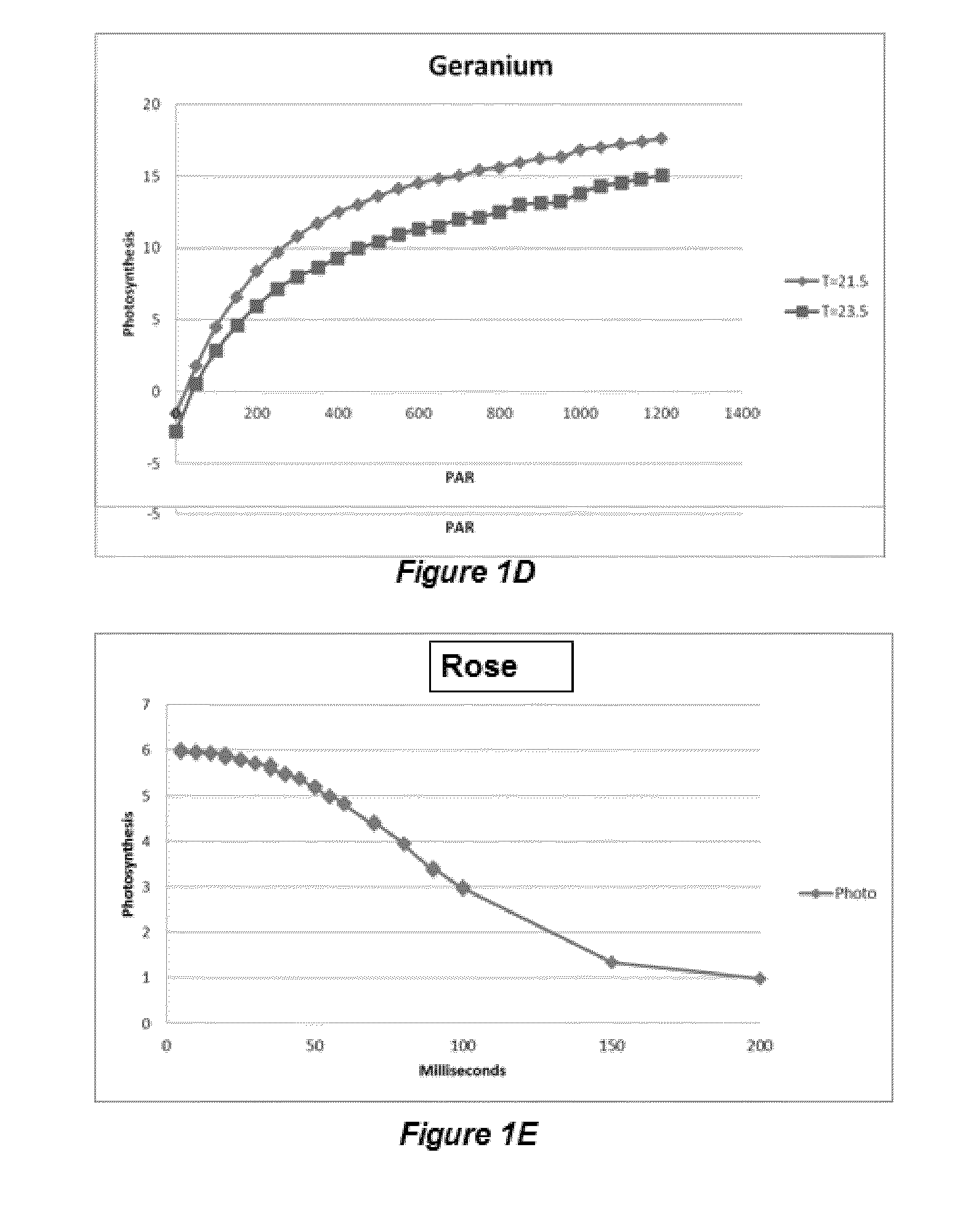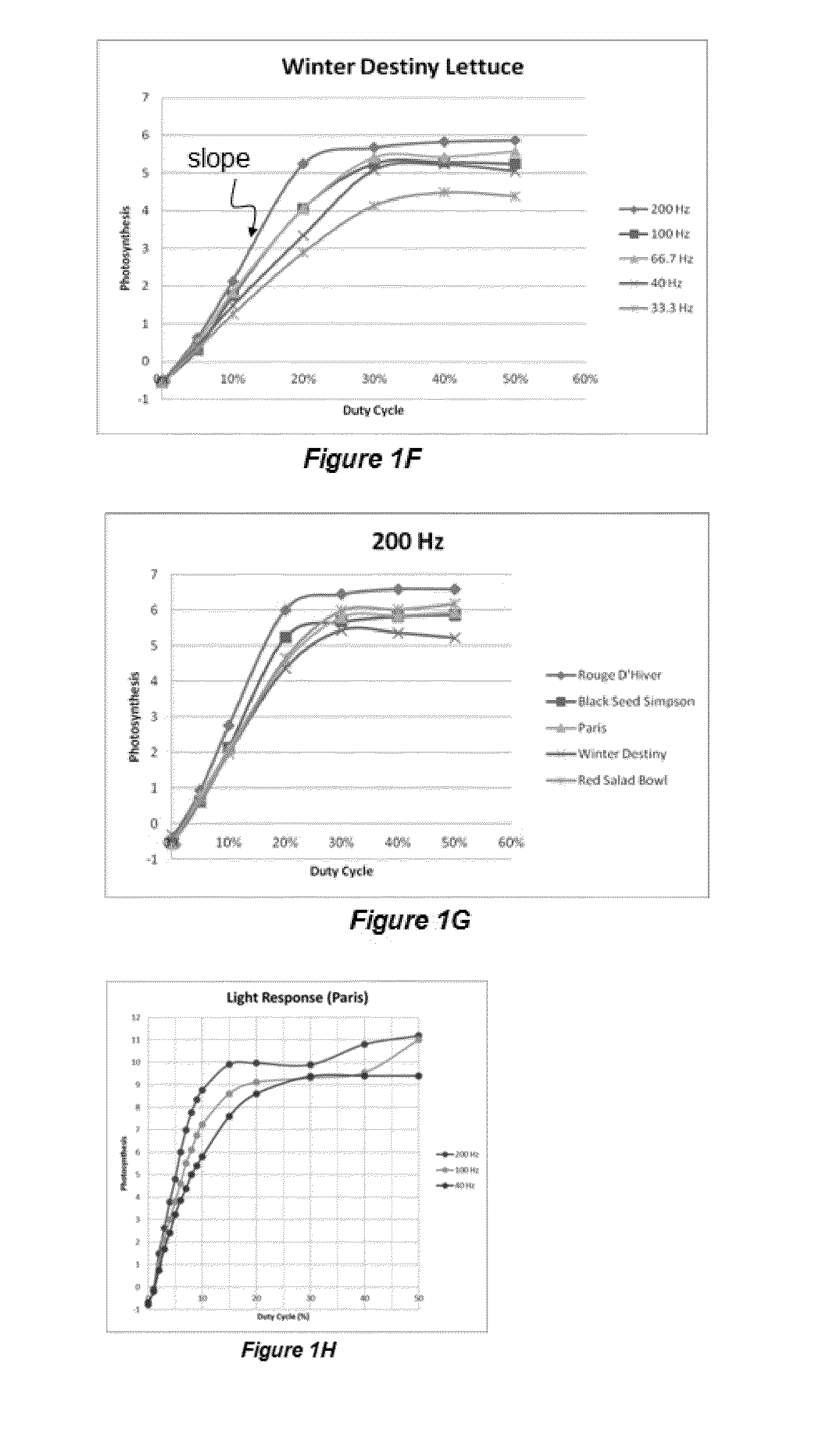SanSSoil (Soil-less) Indoor Farming for Food and Energy Production
a technology of indoor farming and food and energy production, applied in the field of sansoil-less indoor farming, can solve the problems of uncontrollable farming, loss, and insufficient detail of the basic physiological aspects of plants in the prior art model, and achieve the effect of eliminating the lack of control of outdoor fanning and food and energy security for humanity
- Summary
- Abstract
- Description
- Claims
- Application Information
AI Technical Summary
Benefits of technology
Problems solved by technology
Method used
Image
Examples
example 1
Profitability Conventional Farming Commodity Staple Foods
[0149]For farming commodities (staple foods) including: cereals, soybean, sugar from sugarcane and sugar beet, tubers, potatoes, yams, and cassava, the right hand side of Eq. (2) can be shown to be at least 1.3 (marginally profitable enterprises). The global market determines the commodity prices, which range between $0.25 / kg and $0.5 / kg. These crops have an average intrinsic energy content ˜$3 kWh / kg. The cost of diesel is ˜$0.08$ / kWh, while the cost of solar energy is zero.
[0150]From this, we determine
ROE_COE_
to be between 1 and 2. This ratio is nearly constant because it deals with energy and food which are globally determined and track each other in equilibrium, as discussed in this reference entitled: “Food / Fuel Price Dynamics . . . ”, http: / / www.oliverwyman.com / pdf_files / Food-fuel_price_dynamics.pdf. The ratio,
ROE_COE_
changes dramatically only in temporally and spatially localized temporary situations, such as war in the...
example 2
Profitability of Green House Farming with Solar Energy
[0154]From Example 1, if we were to grow the same commodity staple foods indoors, green house, and assuming we have the advantage of two crops per year, Eq. (2), is transformed thus:
2ηE(ɛsolɛother)ROE_COE_≥(1+p+f′+v)(2a)
[0155]Even though we increased by a factor of 2 the productivity, ηE and
ROE_COE_
remain unchanged, but the gain, gsol, is much reduced from ˜100, to low levels approaching 10, or even less than 5, and may approach 1. This reduction in gsol, is a result of the significant increase in,
ɛother=∑i=1kɛi
that includes new terms for heating and cooling energy, electric energy, and fuel energy and direct labor. Furthermore, the right hand side of Eq. (2a) shows an increase in the green house capital cost as reflected in the increased value of f′. The reduction of gsol, and the increase of f′, while the ηE remains unchanged, prevents the AgriPAL condition from being met for commodity products (food and biofuel).
[0156]We, ther...
example 3
Profitability of Green House Fanning for Other Foods
[0157]Other foods defined here as farm products which are not staple commodity foods described Example 1. Especially foods or crops for which the seed to harvest cycle time can be short, in the range of 30 to 60 days to enable more than n plantings each year. These crops include leafy vegetables, herbs, and others, which are not produced for their seeds, and therefore, are harvested before flowering. For these products, Eq. (2) is transformed to:
[0158]37
nηE(ɛsolɛother)ROE_COE_≥(1+p+f′+v)(2b)
[0159]In this case the problem associated with the term gsol approaching 1, is compensated for by 3 to 10 and by the relative pricing flexibility (not available for commodities) leading to a much higher
ROE_COE_=50to100.
This high value also benefits from the relatively low energy content ˜0.3 kWh / kg of these products, and a relatively higher flexibility in setting the prices $2 / kg to $5 / kg. In the commodity case,
ROE_COE_
does not depart from betwe...
PUM
 Login to View More
Login to View More Abstract
Description
Claims
Application Information
 Login to View More
Login to View More - R&D
- Intellectual Property
- Life Sciences
- Materials
- Tech Scout
- Unparalleled Data Quality
- Higher Quality Content
- 60% Fewer Hallucinations
Browse by: Latest US Patents, China's latest patents, Technical Efficacy Thesaurus, Application Domain, Technology Topic, Popular Technical Reports.
© 2025 PatSnap. All rights reserved.Legal|Privacy policy|Modern Slavery Act Transparency Statement|Sitemap|About US| Contact US: help@patsnap.com



